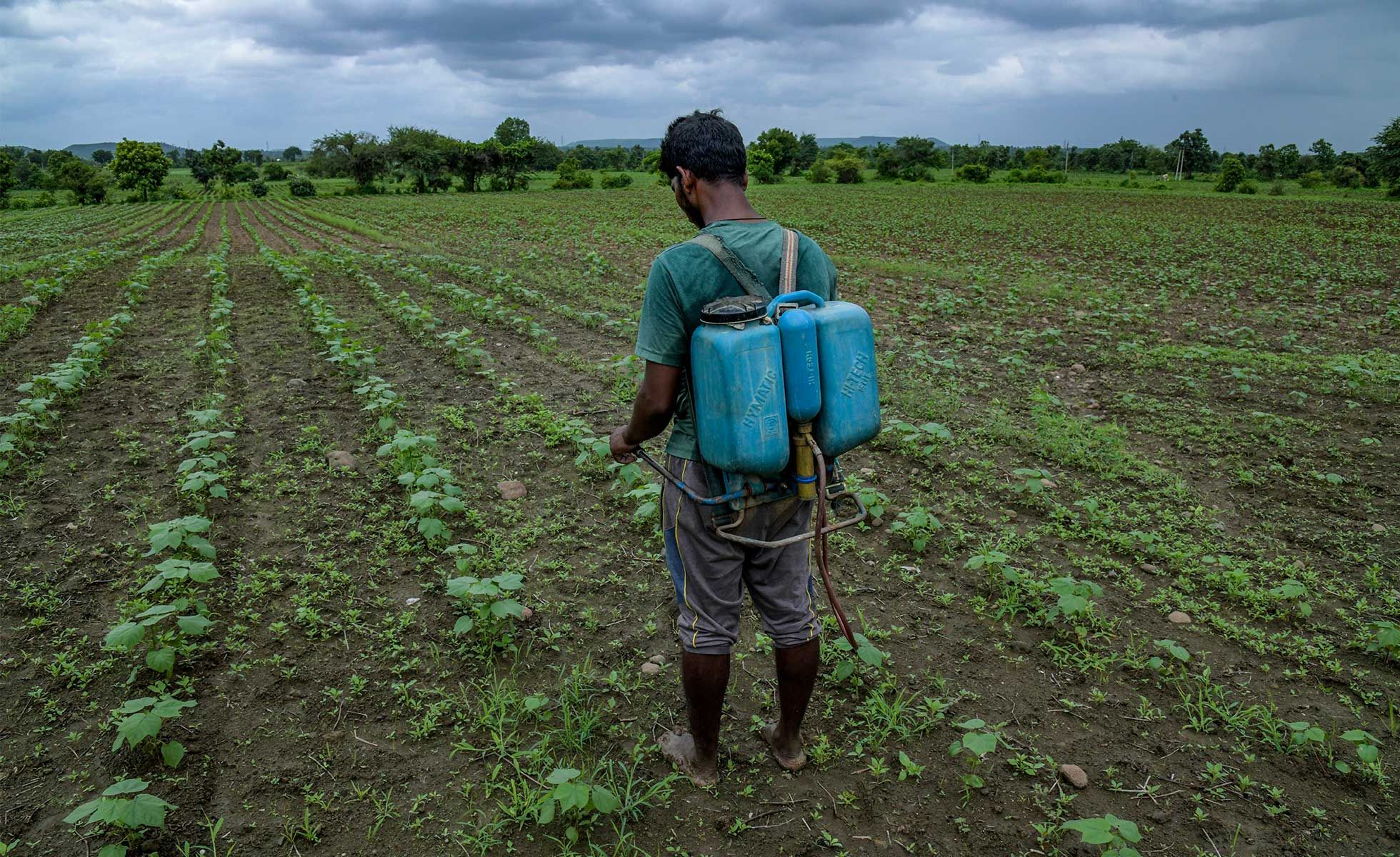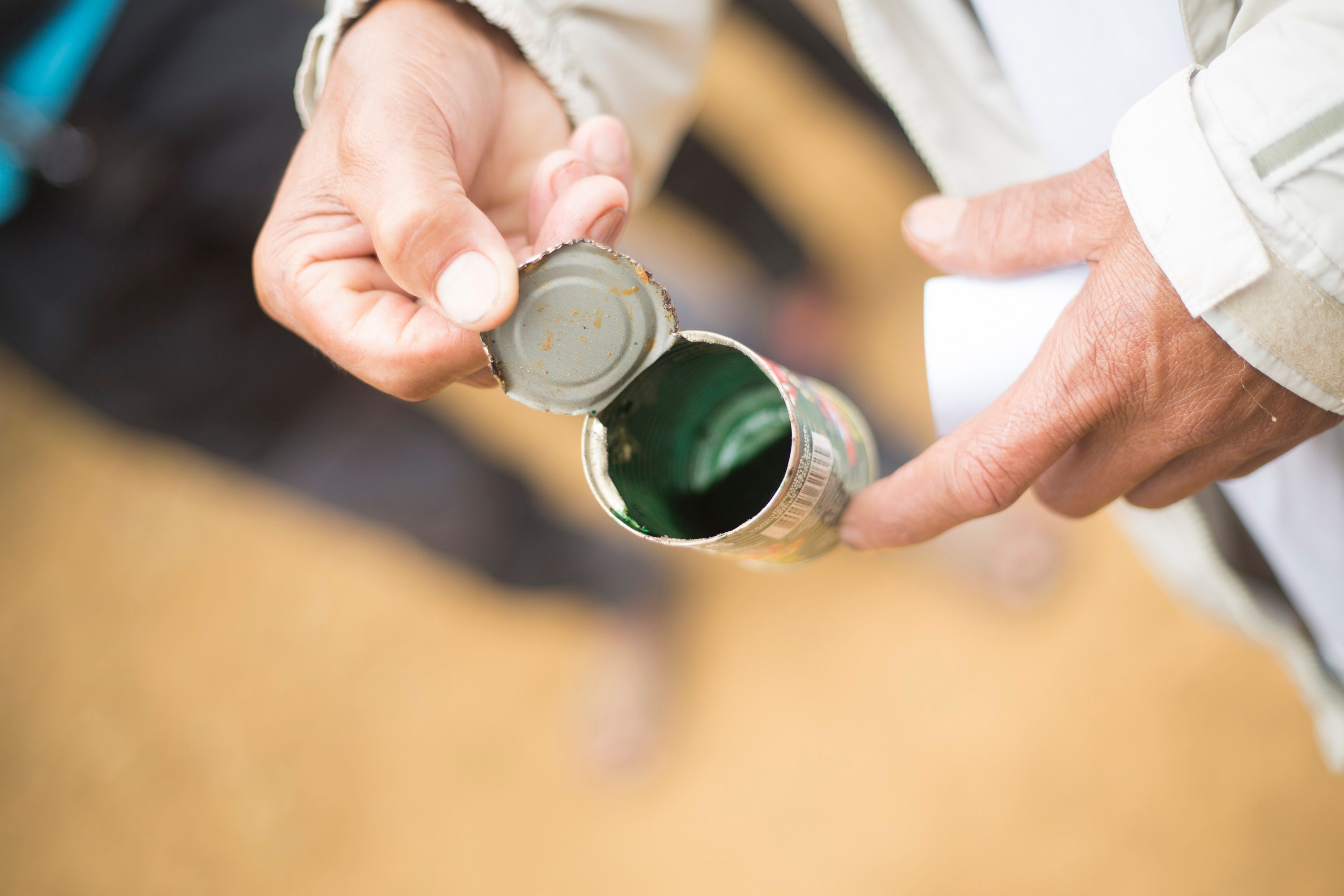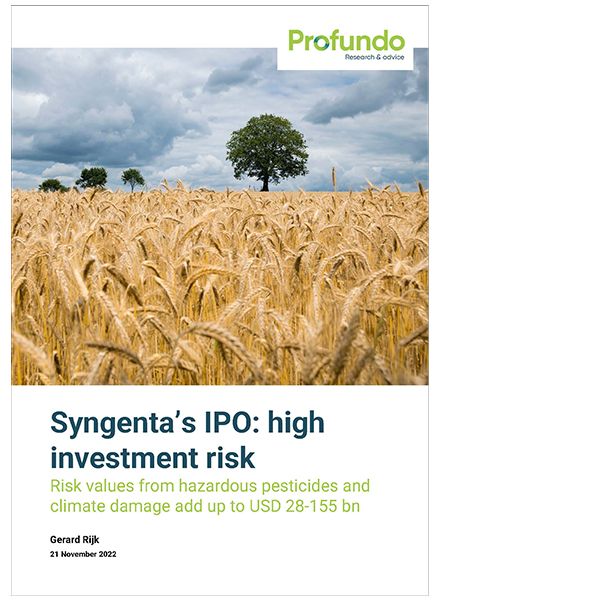Syngenta’s comeback to the stock market – read the package leaflet
Carla Hoinkes, 15. Dezember 2022
Shortly after Syngenta was acquired in 2017 by the state-owned Chinese enterprise Chem China, for USD 43 billion, it was delisted from the SIX Swiss Exchange. Yet the new owners promised that it would make a comeback to the stock market within five years. Now this could happen just before the end of this time period – the company announced an Initial Public Offering (IPO) on the Shanghai Stock Exchange STAR Market before the end of 2022. The market capitalisation sought, i.e. the total value of the shares that will be put into circulation, is approximately USD 45 billion. The ‘Mega IPO’ would be one of the biggest of the year at the international level.
In the meantime, Syngenta has become part of a ‘mega company’. The Syngenta Group arose in 2020 from the merger of Syngenta AG with the Israeli pesticide producer Adama and the agricultural branch of the Chinese chemicals giant Sinochem. It had an annual turnover of USD 28 billion and a global headquarters in Basel. In 2021, the Chinese owner of the Holding, ChemChina, was in turn merged with Sinochem’s parent company. This merger gave rise to Sinochem Holding Corporation, the world’s current largest chemicals conglomerate.
The Basel-based Syngenta Group is now due to return to the stock market – not least to reduce the billions in debt that it has accumulated since the takeover. In addition, Syngenta’s CEO Erik Fyrwald implied in an interview with the NZZ am Sonntag newspaper in May that the Group intends to seek a second listing, likely on the SIX Swiss Exchange.

The associated hidden risks
Before they can list on the stock market, companies must inform potential investors about commercial risks in a prospectus. In its prospectus (which is only available in Chinese) Syngenta cites for instance risks of legal proceedings and other legal issues. These are estimated at over USD 6 billion. Numerous ongoing cases are mentioned by the company, but not priced into the estimate. They include 2,000 complainants in the US and Canada who hold Syngenta’s herbicide Paraquat responsible for giving them Parkinson’s. The company could be required to pay billions in compensation in this highly controversial legal case. The same goes for the demands made by Canadian beekeepers, who hold Syngenta’s insecticide Thiamethoxam responsible for decimating their bee populations. And again for the Indian farmer families who have launched legal proceedings against Syngenta in a court in Basel in relation to severe and in part fatal pesticide poisonings.
The prospectus also mentions risks associated with stricter regulation of its products or non-compliance with health, safety and environmental standards. The company outlines these and other factors, but completely refrains from providing information on the possible financial ramifications.
Yet there are material risks associated with Syngenta’s current business model, which could impact the success of the business. Financial analysts from the Dutch research institute Profundo come to this conclusion in a study commissioned by Public Eye against the backdrop of the upcoming IPO in Shanghai. According to the findings, in particular the agrochemical company’s business model which largely depends on selling highly hazardous and outdated chemicals, health costs caused by pesticides and an opaque synthetic fertilizer business in China that is harmful for the climate, could be a significant exposure. The estimates also show that:
Although commercial figures are currently in the black, at its heart the current business model of the Basel-based agrochemicals company is neither sustainable nor fit for the future.
More infos
-

Financial analysis of possible commercial risks from health and environmental factors
Using equity analysis methods (based on discounted cash flow), Profundo calculated how selected regulatory, health, and climate costs linked to business activity could impact Syngenta’s enterprise value – simplified into market capitalisation and net indebtedness – and EBITDA (Earnings Before Interest, Taxes, Depreciation, and Amortization). The analysis differentiated between more and less likely scenarios (low and high risk scenarios). The calculations were based on publicly available data and current developments in relation to regulation, health and climate protection. Numerous additional costs that are currently unquantifiable were not priced into the calculations. This includes the potentially high costs from acute pesticide poisonings or the sale of insecticides that harm bees, such as Thiamethoxam, as well as risks associated particularly with genetically modified seeds.
Highly hazardous and high risk
The products of the company are “confronted with a rapidly developing global regulatory environment” – this is how Syngenta describes the risk from pesticide regulation. According to the prospectus, pesticides comprise 66% of revenues for the whole group. With an estimated market share of 24% the Holding is global market leader.
Syngenta’s business is particularly under pressure in relation to its so-called highly hazardous pesticides business. In 2019, the UN Food and Agricultural Organization (FAO) and the World Health Organisation (WHO) issued a report stating that these primarily “older generation” substances “constitute a relatively small share of all pesticides registered globally” , but can cause “the most harm”. They called for global agriculture to be “detoxified” from highly hazardous pesticides. However, resistance from the industry and some countries means it could be some time before this happens.
This is not the case for those pesticides that have already been banned within the EU for environmental or health reasons. These demonstrably harmful substances are being banned in ever more countries outside of Europe. The EU, where many large producers are headquartered, has also announced the intent to ban the export of these pesticides. In addition, it wants to stop tolerating residues of these substances that can be detected in imported food. The use of these pesticides in producing foods that are imported into the EU – a large importer of agricultural products – will no longer be possible.
If the substances banned in the EU are taken off the global market, the Syngenta Group could lose 20% of its pesticide revenues (over USD 3.5 billion). This is Profundo’s calculation based on the estimated share of pesticide sales of each product for Adama and Basel-based Syngenta AG.
The potential fall in revenues could reduce profit (EBITDA) by USD 630 million in addition to immaterial assets and fixed tangible assets that would have to be written down (USD 2.5 billion).
The impact on profit and assets would be nearly double if the sale of all pesticides classified as highly hazardous had to be discontinued.

Water pollution, cancer and Parkinson’s
A report released recently by the UN Environment Programme (UNEP) establishes that pesticides cause “various adverse health outcomes”, including “cancers and neurological, immunological, and reproductive effects”,. They also cause an estimated 385 million cases of unintentional pesticide poisonings every year, including 11,000 deaths. In addition, 168,000 suicides occur annually as a result of people drinking pesticides – that accounts for approximately a fifth of all suicides. Syngenta’s Paraquat is one of the pesticides that causes the most poisonings and deaths worldwide.
These impacts are a part of the overall costs caused by pesticides, which are generally borne by the general public. The French research institute Le Basic recently calculated these societal costs – including the treatment of resulting chronic health issues and treating drinking water following pesticide poisoning – in a comprehensive study for Europe. The societal costs that are directly attributable to pesticides alone are calculated at EUR 2.3 billion annually.
Profundo calculated the global financial impact on the Syngenta Group of a scenario in which the Group were held responsible for even a fraction of these costs in the future. Profundo limited its scenario to Syngenta taking on costs of treating drinking water and of treating two recognised occupational diseases among agricultural workers that are directly attributable to pesticides – Parkinson’s and Non-Hodgkin’s Lymphoma. (This is less than 2% of all social costs that the Le Basic study attributes to pesticides). Globally, within the next ten years Syngenta could incur associated costs of USD 7.2 billion (low-risk scenario) up to USD 14.4 billion (high-risk scenario). Many other costs, such as those caused by the millions of cases of acute pesticide poisonings, are currently hard to quantify and for this reason were not included.
Currently the general public bears most of these costs. However, Syngenta and its competitors are increasingly being held accountable – to date primarily through legal means.
Following a legal battle in 2012, Syngenta had to agree to pay state water suppliers in the USA USD 105 million for the treatment of drinking water following pollution caused by its herbicide Atrazine. Atrazine is very persistent in water and is banned in the EU on the grounds of contamination of ground water. After Bayer had to compensate countless complainants who had cancer presumed to have been caused by Glyphosate in the US, Syngenta is facing legal charges due to allegations that Paraquat caused Parkinson’s among users. Glyphosate is one of Syngenta’s most widely sold herbicides.
-
 ©
Atul Loke/ Panos Pictures
©
Atul Loke/ Panos Pictures
-
 ©
Atul Loke / Panos Pictures
©
Atul Loke / Panos Pictures
-

Hidden climate killer
In ever larger image campaigns (including a ski star as brand ambassador), Syngenta is promoting its engagement in favour of the environment and particularly the climate. In its prospectus the company refers to the ways in which it is contributing to the fight against and adaptation of agriculture to climate change. Syngenta committed to halving its own emissions up to 2030.
However – this applies to Syngenta AG, namely the Basel-based pesticide and seed business, but not yet to the Chinese Syngenta Group, which sells synthetic fertilizers at scale. According to the prospectus, in 2020 the Group made 14% of its global revenues from the sale of crop nutrition i.e. fertilizers. Syngenta is leading in the Chinese fertilizer market and this is saying something – more than a quarter of all nitrogen fertilizers are used in China.
Despite the commercial relevance, the Syngenta Group is taciturn about the impact of its fertilizers on the climate. This is likely not without reason – on the basis of estimated emissions from the fertilizer industry, Profundo calculated that from 2016 to 2050, Syngenta’s global fertilizer business would have caused nearly nine times more greenhouse gas emissions than Syngenta AG’s pesticide and seed business.
More infos
-

Greenhouse gas emissions from the production and use of synthetic fertilizers
The three main fertilizers are based on nitrogen, phosphorus, and/or potash. Nitrogen fertilizers are the most commonly used. Producing them is energy intensive and uses large quantities of natural gas, which causes carbon dioxide and methane emissions. Among other things, their application produces nitrous oxide emissions – a highly potent greenhouse gas whose global warming potential is 265 times higher than that of carbon dioxide. According to a 2022 study published by the specialist magazine Nature, greenhouse gas emissions caused by synthetic fertilizers equate to 1,250 million tonnes of CO2 equivalent per year. That is a fifth of all emissions directly caused by agriculture. By way of comparison: the aviation sector emits approximately 900 million tonnes globally every year.
Using EU carbon pricing as a proxy, Profundo has calculated possible financial consequences due to climate damage. Assuming that the activities of the European Syngenta AG were affected by an emissions pricing, accumulated costs of USD 13.8 billion could arise from 2016 to 2050 – provided that Syngenta AG achieves its own emissions reduction targets by 2030 and even introduces a net zero target by 2050.
If in future emissions of the whole group – including the fertilizer business – were priced for in Europe or China, costs could reach USD 127.4 billion.
Impacts of two to three-digit billion figures
All in all, Profundo estimates the possible financial impacts for Syngenta at USD 28 billion (low-risk scenario) up to USD 155 billion (high-risk scenario). This is significant in comparison to the sought after – and in comparison to Syngenta’s competitor’s, high – market capitalisation of USD 45 billion – and places a large question mark over whether the company’s current business model is fit for the future.


